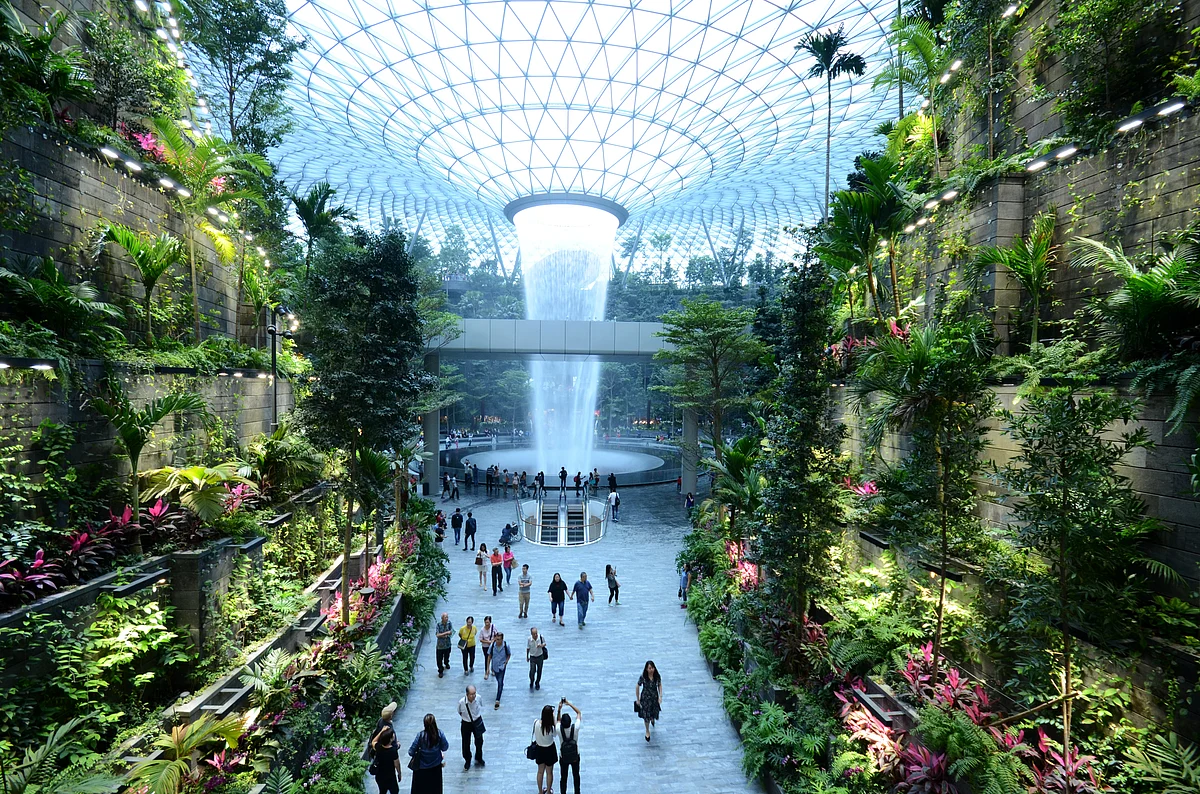What Makes Airports Luxury Destinations For Modern Age
For many of us expats, Dubai has become home ground, and the place we measure the world against. The more we travel, the more we appreciate what Dubai has built, and nowhere is this clearer than in its airport. Few airports capture this sense of grandeur quite like DXB.
In the span of just two decades, it has evolved from a regional hub into the world's busiest international airport, welcoming more than 80 million passengers each year. No longer just a transit point, DXB is a destination by itself. Yet behind this transformation lies a paradox.
Recommended For You Robots, futurists and an Apple co-founder: Moscow prepares for the BRICS Urban Future ForumWhile passenger numbers are climbing, revenues across global travel retail continue to fall short. According to a new CXG report, global travel retail revenues stood at $72 billion (Dh264 billion) in 2023, still below the $86 billion (Dh315 billion) peak of 2019.
While air traffic is rebounding fast, average spend per traveller has dropped 15 per cent since pre-pandemic levels. The issue is not volume but value: travellers with both time and means are not spending the way they once did. Only 28 per cent of airport boutiques deliver exceptional service compared with nearly 50 per cent in domestic luxury retail. And the experience gap is proving costly.
Airports, however, are beginning to respond. Around the world, terminals are being redesigned as “experience hubs” that blend luxury, innovation, wellness, and culture in ways that make the airport itself part of the journey.
Singapore's Changi Airport, a constant trailblazer, has set the standard with robot baristas, artificial intelligence (AI)-powered retail, and immersive spaces from rooftop gardens to indoor waterfalls, alongside beauty brand pre-launches and gamified shopping.
Doha's Hamad International Airport, consistently challenging Changi for the Skytrax title of World's Best Airport, has elevated the wellness dimension with an 800-square-metre Dior Luxury Beauty Retreat, offering bespoke treatments in a Parisian-inspired setting.
London Heathrow, one of the world's busiest airports, has introduced a new dimension to luxury travel retail with Louis Vuitton's first UK café by Michelin-starred chef Cyril Lignac, set within a striking Marc Fornes–designed flagship that blends couture with culinary artistry.
Closer to home, in quintessential UAE-style, DXB is also raising the bar, having recently unveiled a large-scale renovation of its arrivals retail across Terminals 1, 2 and 3, upgrading over 2,100 square metres of space with sleek new layouts, interactive displays and improved customer flow. The emphasis is on creating a world-class first impression for arriving passengers rather than simply moving them through duty free aisles.
Abu Dhabi's Zayed International Airport is also pioneering immersive retail, with its new Terminal A featuring digital façades, ambient audio and award-winning concept spaces such as Presentedby, where luxury, streetwear, sustainability, and technology intersect in a design-led shopping experience that rivals high street flagships.
In addition to these giants of international travel, Seoul's Incheon Airport has boosted spend by 35 per cent through its Korean Cultural Street concept, while Bengaluru's Kempegowda International Airport integrates a botanical terminal experience that invites travellers to slow down and connect. With duty free alone no longer attractive enough, passengers are looking for curated experiences that match high street luxury retail, from personal concierges and design-led lounges to wellness sanctuaries and cultural immersion zones.
CXG frames this shift as a “Trilogy Approach”, urging airports, operators and brands to align. For airport authorities, the focus is on positioning the terminal as a destination. For retail operators, it is about closing the service gap with domestic luxury stores. For brands, the challenge is consistency: ensuring that what a customer experiences on the high street matches what they encounter at the airport. “Travel retail represents unique and exciting opportunities for luxury brands, but many are failing to deliver the experiences required for success,” said Christophe Caïs, founder and CEO of CXG.
As global mobility accelerates and consumer expectations sharpen, the airport is emerging as a litmus test for how well luxury can adapt to the captive, multicultural and discerning traveller.
For airports, it is clear that the best way forward is to quickly adapt and treat these spaces not as extensions of duty free but as global stages where brands, operators, and airports come together to set new benchmarks in experience.
For travellers, it means the hours between flights are no longer wasted time, but enriching value add-ons and parts of the journey. For the industry, it is a chance to turn transience into talkability and loyalty.

Legal Disclaimer:
MENAFN provides the
information “as is” without warranty of any kind. We do not accept
any responsibility or liability for the accuracy, content, images,
videos, licenses, completeness, legality, or reliability of the information
contained in this article. If you have any complaints or copyright
issues related to this article, kindly contact the provider above.
Most popular stories
Market Research

- Motif AI Enters Phase Two Of Its Growth Cycle
- 1Inch Unlocks Access To Tokenized Rwas Via Swap API
- Kucoin Presents Kumining: Embodying Simple Mining, Smart Gains For Effortless Crypto Accumulation
- With Seal, Walrus Becomes The First Decentralized Data Platform With Access Controls
- Jpmorgan Product Head Joins GSR Trading MD To Build Institutional Staking Markets
- Innovation-Driven The5ers Selects Ctrader As Premier Platform For Advanced Traders






















Comments
No comment